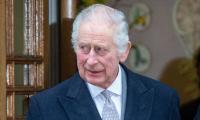LAHORE
Through a religious commitment and persistence in his belief, Mahmood Hayat carved out his own unique expression turning it into a visual excellence.
Albrecht Dürer was an old German artist, who loved to draw and paint illustrations in the 15th century depicting animal forms and portraits. The artist was also known for his high quality woodcut prints and working with the famous Italian masters. As time passes by, every now and then, from another part of the world, emerges a new someone.
Filled with the deep passion of projecting himself through an artistic expression, the artist, Mahmood Hayat takes great responsibility in the bond that develops between an artwork and a viewer. He experienced a strong inclination towards aesthetic imagination when he was first introduced to at an early age.
Hayat learned the traditional techniques of painting and finishing classical furniture products. His arousing curiosity and profound depth of interest led him to develop his rare style.
The artist focuses on natural forms as his inspiration in art. It is well understood that humans are inseparable from nature.
Not just amidst it, humans make a huge part of the miraculous mother nature themselves; hence, it is self-evident that human emotions can be manifested in any form of nature be it a plant, animal or even a speck of dust.
The artist’s skill of fabricating his persona in art is quite notable. He conceptualises beauty in its raw form, combines it with his imagination and then allows it to flow into the canvas.
A single piece of art speaks many languages and communicates a different message to different people. Even if the artist paints with a single, well-defined objective, yet the distinctive mind of an individual would interpret that painting according to his own perspective.
While it might not be possible for an artist to control the degree of stimulation an artwork can cause in a person but he certainly can create an aura which can invigorate him either positively or negatively.
Mahmood Hayat’s prime concern is to spread positivity through his work. He creates a feeling brimmed with subtlety and warmth that captivates a viewer and he finds himself surrounded by a blanket of curative hopes which keep him centered as a human being.
Living in the fast-paced world has somehow caused humans to lose their individuality. The beauty has been standardised and people follow the fads like mindless sheep.
They make ardent efforts to conform to the modern standards ignoring the originality of their being. Through his paintings, the artist portrays significance, charm and beauty of the untamed. He paints figures which are not subdued. They defy conformity and stand out with their own liberated and wild expression.
In his painting Learning to fly, he has shown a pair of winged horses also known as Al-Buraq; which means lightning in Arabic, is a creature emerging from the heavens. The sole purpose of this winged horse is to transport the Prophets in the night. Hayat's painting depicts these two rare creatures emerging from the clouds as if leaving behind the dust; and is on the course of finding in its own destiny.
The head of the horse is pointing straight in the direction of the path which lies in front of it. The artist’s study of light is quite vivid in this painting. He has given weight to the clouds through contours with applying impasto and then gently apply paint with a piece of cloth.
Other paintings like Fragmentation; The Unexpected Guest Series consists of portraits of women. The colours in the paintings again blend into one another when observed closely but from a little distance they seem to be well-defined. The expressions on the faces of women channel strength and resilience. The detailed study of anatomy in his paintings without the use of sharp lines is indeed a marvel.
His paintings have uncompromising aesthetics which keep a viewer completely immersed in its delight. To the artist, it’s more important to paint an emotion rather than a complete picture as he believes “a painting without its intangible aspect serves no purpose”. Some of his other works include: Journey in veil painting, Innocence painting and Portrait expressionism painting.
Asma Jahangir Conference. — Twitter/FileLAHORE:The Asma Jahangir Legal Aid Cell will be hosting the Asma Jahangir...
This representational image shows Solar panels. — Unsplash/FileLAHORE: Chinese Consul-General Zhao Shirin Thursday...
Participants attend the informative “PhD Scholars workshop arranged by the University of Veterinary & Animal...
Lahore College for Women University Vice Chancellor Prof Dr Shagufta Naz seen in this image. — LAHORE COLLEGE FOR...
Provincial Minister of Specialized Healthcare and Medical Education Khawaja Salman Rafique addresses an event on March...
Punjab Assembly Speaker Muhammad Ahmad Khan addresses media persons in this still on April 25, 2024. —...







